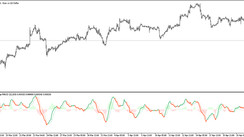As a result of the June meeting, which ended on Wednesday, the leaders of the Fed raised the base interest rate by 75 basis points, to the level 1.75%. This decision was not entirely expected. If some market participants were waiting for just such a decision, then most economists believed that the interest rate at this meeting would be raised by 0.50% and by the same amount at the July meeting. This was previously discussed in the leadership of the Fed.
And yet the rate was raised by 0.75%, and for the first time since 1994. Usually, the Fed prefers to take smaller steps, changing the interest rate at its meetings by 0.25%.
On March 16, the Fed raised rates by 0.25%, the first time since December 2018, after the rate was cut to 0.25% in 2020 in response to the economic impact of the coronavirus pandemic.
In addition, yesterday the Fed confirmed that it will continue to reduce its portfolio of assets, following the plan published in May, and "further rate hikes would be appropriate." The pace of cuts should double to $95 billion a month, and by the end of 2022, the rate is likely to be brought to the level 3.4%.
"When choosing a suitable position in monetary policy, the committee will continue to monitor the impact of incoming information on the economic outlook. The committee will be ready to adapt monetary policy appropriately as risks arise for the committee's goals," the Fed said.
Oddly enough, after such a seemingly tough decision by the Fed, the dollar did not rise. Moreover, the DXY dollar index fell to 104.93 yesterday, from 105.34 the day before, and as of this writing, DXY futures are traded near 104.83 mark.
Why did this happen?
Fed chief Jerome Powell told a post-meeting press conference that if they (at the Fed) manage to bring inflation down (to the 2.0% target) and the unemployment rate only rises to 4.1%, that would be a "successful outcome" .
The Fed does not seek to put people out of work, but maintaining the current strong labor market in the absence of price stability is not possible, Powell said. The Fed needs to try not to cause a recession and bring inflation back to 2.0% while maintaining a strong labor market. "The road to getting there has become more difficult," Powell acknowledged, hoping "the US economy is very strong and has good potential for tighter monetary policy."
And yet, the dollar strengthened very slightly after such a decision and statements from the Fed. It seems that the Fed is seriously worried about the growing risks of stagflation (this is when the economy does not grow or even falls, while inflation continues to accelerate), and it can be very difficult to get out of this situation. If the Fed fails to successfully react in its actions, then the US economy may fall into a deep crisis altogether, and the flight of investors from American assets (including the dollar) may intensify – one has only to look at the fall of American stock indices.
It is possible that we are on the verge of just such a development of events. In this case, the entire world economy will suffer, and citizens will face even greater economic difficulties. I would like to believe that this is not so!
Tomorrow, during his speech, which will begin at 12:45 (GMT), Jerome Powell will try to dispel the doubts of market participants and further explain the Fed's decision on monetary policy made the day before.





